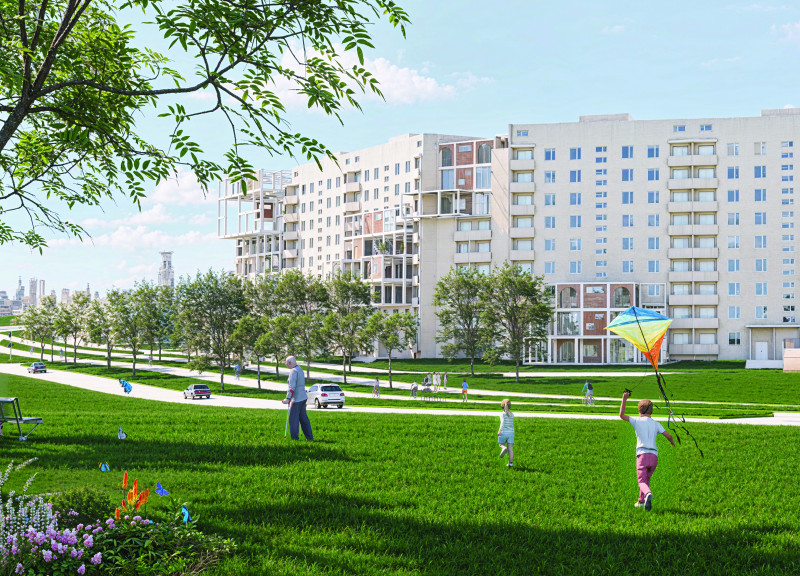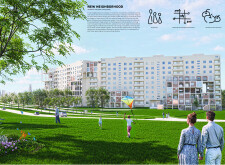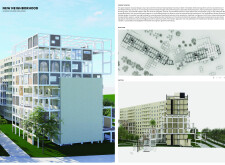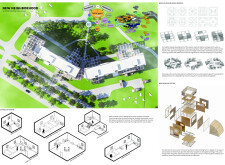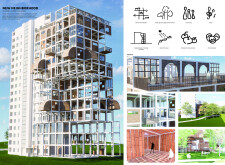5 key facts about this project
### Overview
The New Neighborhood housing project, developed for the Kharkiv Housing Challenge, addresses the critical needs of post-disaster recovery through a design that merges innovative modular systems with natural elements. Situated in Kharkiv, the initiative aims to foster a sustainable community that enhances resilience and mental well-being while utilizing space efficiently. The design emphasizes adaptability and environmental restoration, ensuring that it meets the evolving requirements of its residents.
### Modular Structure and Community Integration
At the core of the design is a modular framework that allows for the relocation and repurposing of housing units based on community dynamics. The architectural form draws from traditional Ukrainian motifs, effectively aligning contemporary design with cultural context. This approach not only emphasizes functionality but also enhances the aesthetic identity of the neighborhood. The structural system employs a combination of cubic designs and open frameworks to facilitate flexible use of space, incorporating both residential and communal functions. Large windows and open-plan layouts promote natural light and ventilation, establishing a strong connection between indoor and outdoor environments.
### Material Utilization and Ecological Considerations
Distinctive material choices include reinforced concrete for durability, timber for aesthetic warmth, glass for transparency, and steel for structural support. The integration of locally sourced materials reinforces the project’s ties to its geographical context, enhancing the sense of place. Green public spaces, including communal gardens and children's play areas, are integral to the layout, encouraging social interaction and improving mental health. Features such as vertical gardens and green roofs promote biodiversity and environmental restoration while providing natural insulation and air purification, contributing to overall sustainability.
Adaptability remains a significant aspect, with modular units designed to accommodate various family structures and uses, allowing for dynamic reconfiguration over time. Such flexibility ensures that the neighborhood can evolve in response to changing social or environmental conditions.


